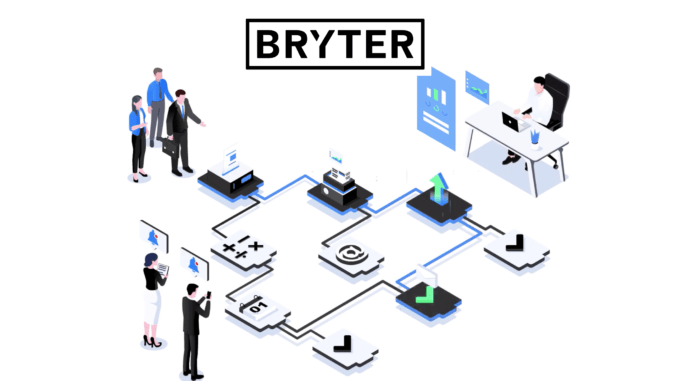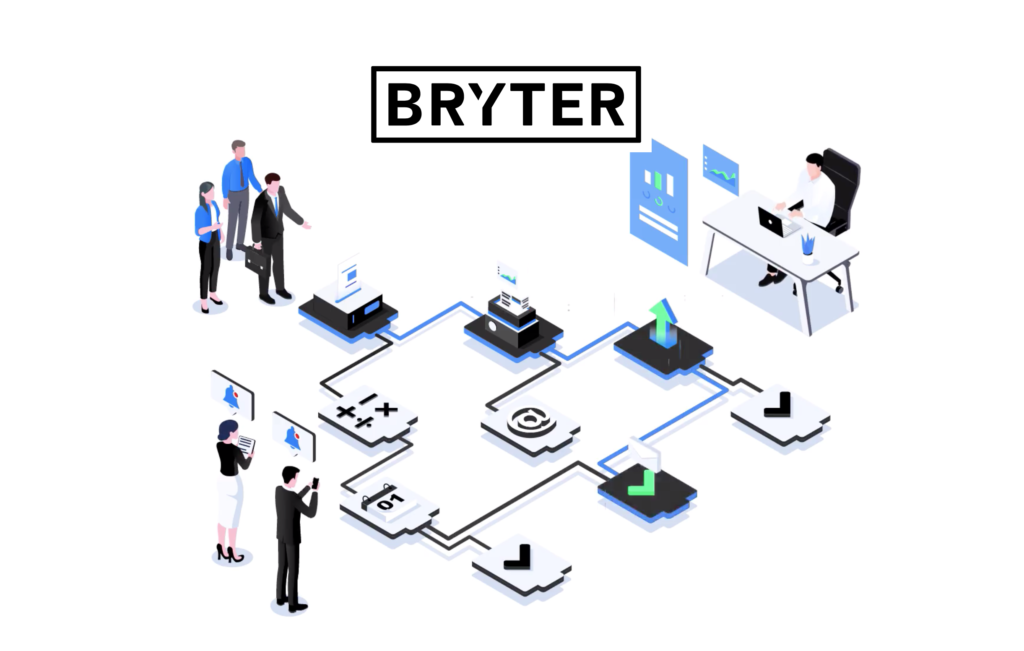
By Michael Grupp, CEO of BRYTER
Every leader is tasked with the challenge of innovating the way their organization operates and General Counsel are no exception.
But, it can be hard for organizations to begin making changes. They need to start with low-hanging fruit – those services they can transform easily, quickly, and that crucially have a guaranteed return on investment (ROI).
Moreover, these use cases need to have clear benefits, be useful to a number of people – whether employees or clients – and be easy to showcase. Put bluntly, the most important innovations are almost invisible and most of the time are quite mundane.
The following five applications fit nicely into that category and offer those quick wins that organizations need to get their digital transformation process started. Crucially, these ‘apps’ can be built in under a day, using BRYTER’s no-code platform. Suddenly, without the need for programming expertise, organizations can yield immediate results.
The most important innovations are almost invisible and most of the time are quite mundane.
Digital Frontends: Legal Intake Management Tool
Legal departments focus on delivering essential legal services quickly and efficiently to the business. The better they can deliver these services, the more they are able to contribute as a valuable facilitator and strategic partner in their organization.
The challenge most legal departments face is that they are constantly approached through different channels with requests for legal advice. Some of these requests will be new, but many of them will be follow ups on previous conversations and advice. With no standardized process of handling repetitive and common legal requests, the workload for in-house lawyers increases and, at the same time, it becomes impossible to properly track and measure requests against quantitative and qualitative KPIs.
The solution: legal teams can build their very own Legal Intake Management Tool. This tool enables employees from across the organization to raise legal queries in a customizable and interactive interface.
Legal departments then have all of the necessary information at their fingertips in a digital inbox, negating the chances of missing something important and ensuring consistency in the way they advise the business. This provides transparency on legal demand in the organization and allows the legal team to better organize and allocate their work while gaining first-hand insight into their team’s workload. By distributing certain work to specific teams or people, or navigating users towards integrated self-service tools to satisfy their legal requests (e.g. NDA generators see below), legal departments can save up to 90% of time allocating resources and providing services.
Document Generation: NDA Generator
NDAs might not be the sexiest documents you work with, but they are essential for every company. Employees require NDAs, but they’re often using templates that are either for other purposes or outdated. Perhaps more alarmingly, they may be amending the template as they see fit – meaning that these agreements can be full of errors. Providing them with the right NDA every time can be time-consuming and reduce the time legal departments have to deal with more pressing and complex issues.
The NDA Generator can be used to draft NDAs in a fast, transparent and compliant manner. This is a self-service solution that gives employees the right template wherever they are and whenever suits them – even through their mobile device.
It’s a win-win: the legal department saves time dealing with requests for NDAs and business users are able to receive the correct form of NDA with a few clicks. What’s more, the NDA Generator can be integrated into the Legal Intake Management Tool so that these requests are dealt with automatically, and with e-signing tools, such as, DocuSign to provide an end-to-end workflow.
Self Service App: IR35 Contractor Checker
If you employ contractors, you run the risk of being personally liable, due to upcoming changes to IR35 in April 2021. With the rise of the gig economy, many businesses use freelancers to support parts of their business. Manual checks to find out if a freelancer arrangement is impacted by changes to IR35 can be expensive and time-consuming, and doing nothing presents a significant risk.
The best way to ensure your company is making the right decision is to use the IR35 Contractor Checker, a tool that can be easily adapted and customized to different industries and contractor types. This uses a sophisticated risk logic model to check the employment status of a contractor under the new regulation. It can also be easily integrated into existing IT infrastructure and used by anyone at any time.
Process Automation: Client Due Diligence Tool
The use of a Client Due Diligence (CDD) tool is nothing new – there is a requirement to carry out checks when establishing a business relationship or entering into a high-value transaction with a prospective client. Yet it is still not in use everywhere.
This is often a costly and lengthy process for law firms, as practice groups have to navigate through a raft of internal processes and policies, losing valuable time and resources. This tool automates your process by assessing prospective clients and the proposed transaction against various data sources, such as, sanctions lists. The user is guided through an easy-to-follow questionnaire, and in certain situations the compliance team can be automatically notified that they’re required to step in to approve the transaction, with an approval workflow triggered.
The novelty of the BRYTER application is its end-to-end capability: the tool can be used to digitally map the entire process from data collection and identification of the client to notification of a possible suspicious transaction. You can build intake processes immediately without having to use internal IT or external resources. In addition, you can control, manage and update the content at all times.
Virtual Legal Assistant: Gift & Hospitality Advisor
When we consider certain aspects of our jobs it is not always easy to understand whether or not they’re comply with company policy; a prime example of this is with gifts and hospitality. Are you allowed to invite your intern for lunch? Are you allowed to accept an invite to a restaurant? Can you book a table for your partners?
Some of these questions can go unanswered because there’s little time to check and no easy way to do so. Most people revert to calling the legal or compliance department – but the problem is this is time-consuming and burdensome for everyone involved.
Using an interactive self-service advisor, policies like this become easily accessible and digestible. Employees are guided through a questionnaire to get answers which reflect your policies. This provides your employees with clear instructions on whether or not to accept a gift or invitation.
Like with most of these apps, you can centralize this by integrating your Gift & Hospitality Advisor with the Legal Intake Management Tool.

[ Artificial Lawyer is proud to bring you this sponsored thought leadership article by BRYTER. ]
Nice article Richard, I think that you could have put as well a Contract Lifecycle Management Tool, no?